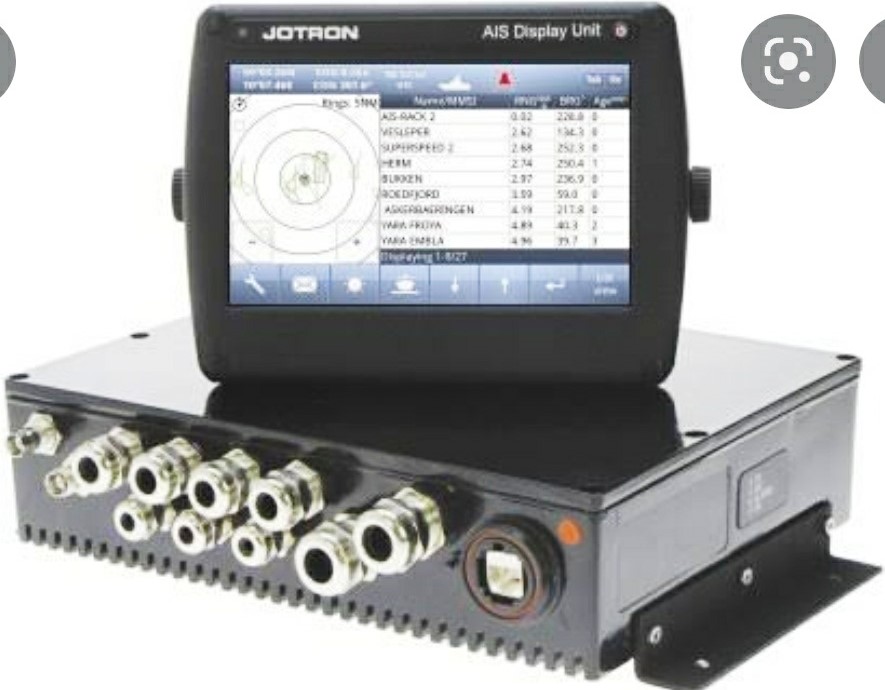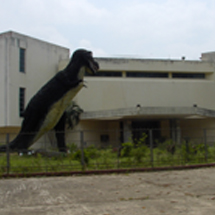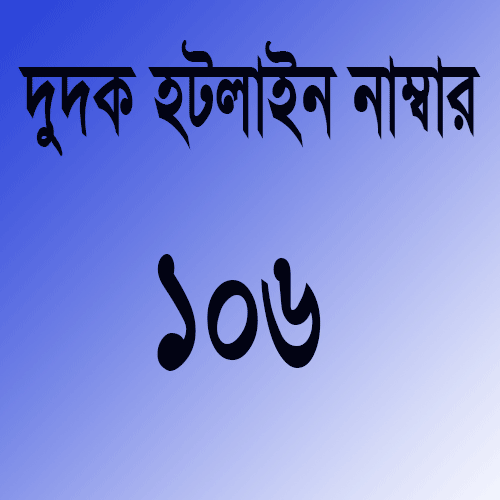সর্ব-শেষ হাল-নাগাদ: ২৭ মে ২০২২
আবহাওয়া অনুলিপি
বেতার এবং টেলিফোন লাইনের মাধ্যমে নথি এবং সাদা-কালো ফটোগ্রাফ প্রেরণে অনুলিপি যন্ত্র বিকশিত হয়েছে। টিভিতে দেখার উপযোগী উপগ্রহজাত আবহাওয়ার মানচিত্র এভাবে ট্রান্সমিট করা হয়, সংবাদপত্র ও ম্যাগজিনেও দেখা তারচিত্র হতে পারে। অনুলিপি প্রযুক্তি ১৯৩০ এর একটি পণ্য । আদি অনুলিপি যন্ত্রগুলি ছিল হস্ত ক্র্যাঁকৃত এবং ঘূর্ণনশীল ধাতব ড্রাম ও ব্রাসের গিয়ার ব্যবহৃত। পরের মডেলগুলিতে বৈদ্যুতিক মোটর সন্নিবেশিত হয়। সবচেয়ে আধুনিক আবহাওয়া উপগ্রহ কেন্দ্র উচ্চ রেজল্যুশনের ডিজিটাল লেজারের অনুলিপি কম্পিউটার ব্যবহার করে। একটি যান্ত্রিক অনুলিপি ট্রান্সমিটারের কেন্দ্রবিন্দুতে সাধারণত ১২০০ RPM এর গতিতে একটি দ্রুত ঘূর্ণনশীল ড্রাম কিন্তু ৬০ এবং ১৮০ RPM এর মধ্যে তারতম্য হয়ে থাকে। অনেকটা কফি ক্যানের চারপাশে একটি লেবেল আবৃত থাকার মত যে ছবিটিকে প্রেরণ করতে হবে তাকে এই ড্রামের চারপাশে জড়ানো হয়, যেখানে ব্যবহৃত টোন রেঞ্জ ১৫০০ HZ (কালো বিন্দু) থেকে ২৩০০ HZ (সাদা বিন্দু) পর্যন্ত । একটি আদর্শ মানের ড্রামের ব্যাস ১৫২ মিমি (প্রায় ৬ ইঞ্চি) এবং অন্তত ৬৬০ মিমি (প্রায় ২৬ ইঞ্চি) দীর্ঘ হয়ে থাকে।

Facsimile machines were developed to transmit documents and black-and white photographs over radio and telephone lines. The satellite weather maps as seen on TV are transmitted this way, as are the “Wirephots” also as seen in newspapers and magazines. Facsimile technology is a product of the 1930S. The earliest facsimile machines were hand-cranked and used spinning metal drums and brass gears. Later models featured electric motors. The most modern weather satellite stations use high resolution digital laser facsimile computers. The heart of a mechanical facsimile transmitter is a rapidly spinning drum of speeds normally at 120 RPM but varying between 60 and 180RPM. The photo to be sent is wrapped around this drum, much like a label is wrapped around a coffee can with tones ranges from 1500HZ.(black dots) to 2300HZ. (White dots) from range. A standard drum measures 152 mm in diameter (about 6 inchesw)and is at least 660 mm long (about 26 inches)
সর্বশেষ খবর
পবিত্র ঈদ-উল-ফিতর, ২০২৫ উপলক্ষে আগামী ২৭ মার্চ ২০২৫ থেকে ৪ এপ্রিল ২০২৫ তারিখ পর্যন্ত জাতীয় বিজ্ঞান ও প্রযুক্তি জাদুঘরের গ্যালারী প্রদর্শনী কার্যক্রম বন্ধ থাকবে।
Array
(
[id] => 7940452d-2f6d-4e42-8f87-8afb3227ed08
[version] => 63
[active] => 1
[publish] => 1
[created] => 2015-01-25 15:58:17
[lastmodified] => 2024-11-03 13:26:54
[createdby] => 136
[lastmodifiedby] => 2598
[domain_id] => 6414
[office_id] =>
[menu_id] =>
[title_bn] => মহাপরিচালক
[title_en] => Director General
[body_bn] =>
[body_en] =>
[userpermissionsids] =>
[uploadpath] => e9005938-c62a-4cda-bdf2-fb21556182fc
[userip] => 127.0.0.1
[useragent] => Mozilla/5.0 (Windows NT 10.0; Win64; x64) AppleWebKit/537.36 (KHTML, like Gecko) Chrome/130.0.0.0 Safari/537.36
[usergeo] =>
[is_right_side_bar] => 1
[office_head_photo] => Array
(
[0] => Array
(
[name] => 2024-11-03-07-22-6b2a72f3355ff271bf2bf600fddeeab8.jpg
[caption_bn] => মহাপরিচালক
[caption_en] => Director General
[link] =>
)
)
[office_head_description] => মহাপরিচালক
[office_head_des_bn] => মুনীরা সুলতানা এনডিসি
মুনীরা সুলতানা এনডিসি, অনানুষ্ঠানিক বিজ্ঞান শিক্ষা কার্যক্রমের মাধ্যমে একটি বিজ্ঞানমনস্ক জাতি গঠনের লক্ষে ৩১ অক্টোবর, ২০২৪খ্রিঃ তারিখে জাতীয় বিজ্ঞান ও প্রযুক্তি জাদুঘরের মহাপরিচালক হিসেবে দায়িত্ব গ্রহণ করেন।
তিনি ১৯৯৩ সালে বাংলাদেশ সিভিল সার্ভিস প্রশাসন ক্যাডারে যোগদানের মধ্য দিয়ে কর্মজীবন শুরু করেন। তিনি বেশিরভাগ সময় বিভিন্ন মন্ত্রণালয় ও অধিদপ্তরে এবং মাঠ প্রশাসনে দায়িত্ব পালন করেন। ঢাকা বিশ্ববিদ্যালয় থেকে উদ্ভিদবিদ্যা বিভাগ থেকে তিনি স্নাতকোত্তর ডিগ্রি অর্জন করেন। চাকরিতে কর্মরত অবস্থায় তিনি নর্দান ইউনিভার্সিটি, ঢাকা থেকে গভর্নেন্স স্টাডিজ বিষয়ে দ্বিতীয় স্নাতকোত্তর ডিগ্রি অর্জন করেন। তিনি ২০১৮ সালে ন্যাশনাল ডিফেন্স কলেজ থেকে ন্যাশনাল ডিফেন্স কোর্স সাফল্যের সাথে সম্পন্ন করেন।
চাকুরিরত অবস্থায় তিনি দেশে এবং বিদেশে বিভিন্ন পেশাগত প্রশিক্ষণ কোর্স সাফল্যের সাথে সম্পন্ন করেন। একটি বিজ্ঞানমনস্ক জাতি গঠনে এবং সারা দেশে বিজ্ঞান ও প্রযুক্তির সুফল ছড়িয়ে দিতে তিনি নিরলস কাজ করে যাচ্ছেন।
[office_head_des_en] => Munira Sultana ndc
Munira Sultana ndc, took charge as Director General of National Museum of Science and Technology on October 31, 2024 with the aim of building a science minded nation through informal science education programs.
She started her carrier in the Bangladesh Civil Service administration cadre in 1993. She served mostly in field administration and different ministries and directorate. She earned her degree of M.Sc. in Botany from the University of Dhaka. While in service, she earned a second Masters degree in Governance Studies from the Northern University, Dhaka. She completed the National Defense Course successfully in 2018 from National Defense College.
She acquired various professional training courses during her service period in home and abroad and keenly interested in building a science minded nation and spread the blessings of Science and Technology across the country.
[designation] =>
[designation_new_bn] => মহাপরিচালক
[designation_new_en] => Director General
[weight] => 0
)
=======================
কেন্দ্রীয় ই-সেবা
পথ নির্দেশিকা

হটলাইন

সামাজিক যোগাযোগ

জরুরি হেল্পলাইন নম্বর




.jpg)













